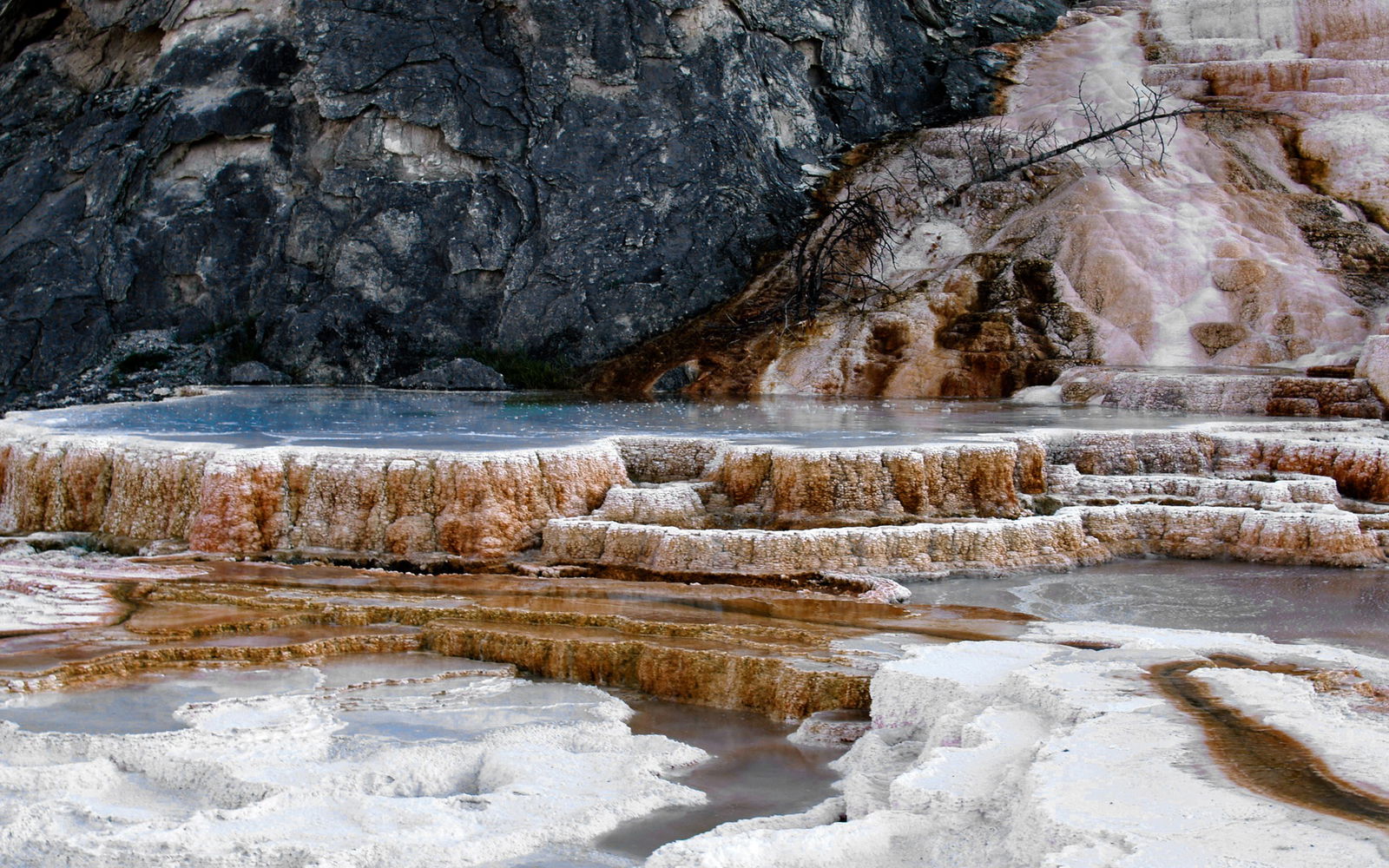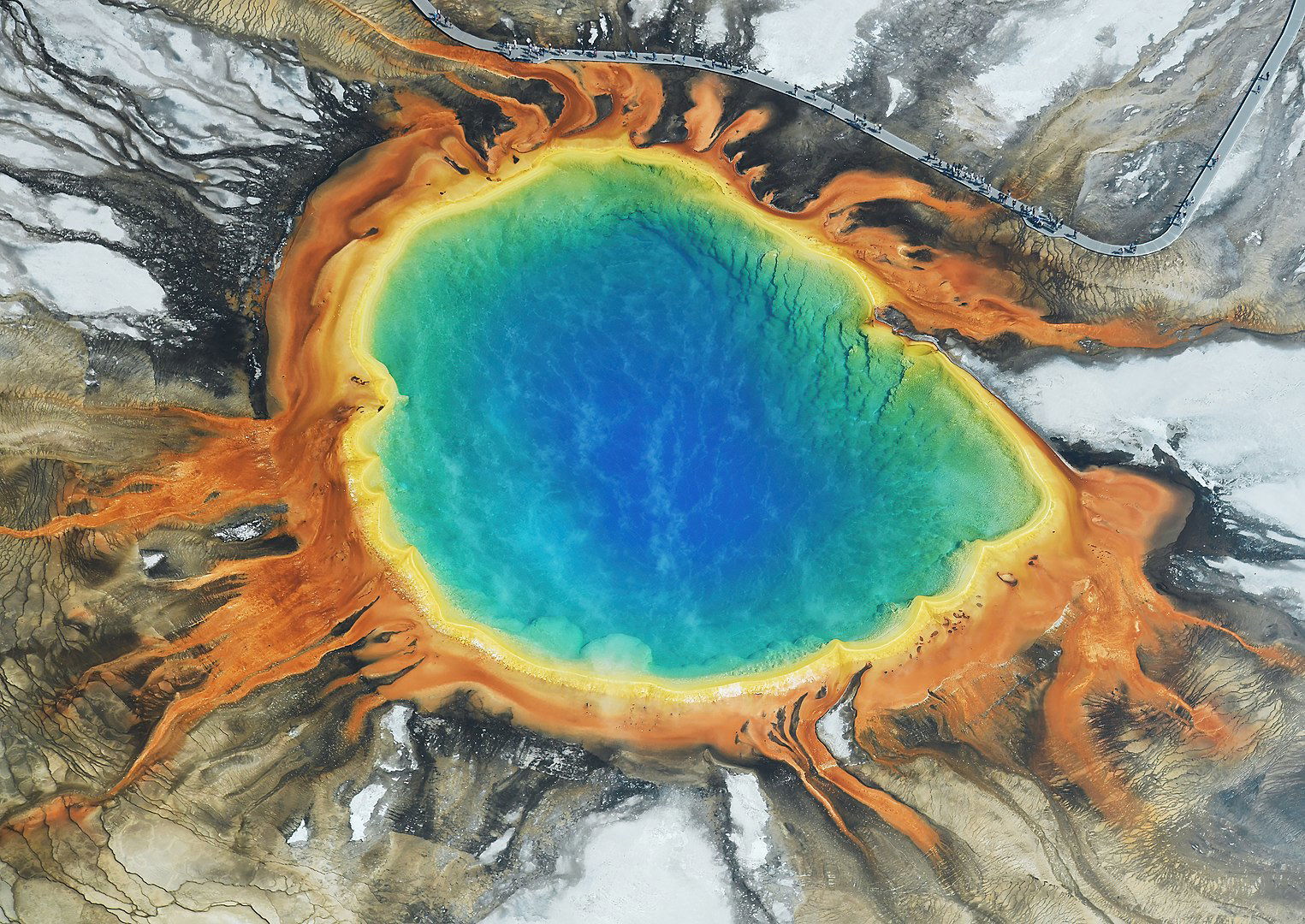Yellowstone has always been known as one of the most extraordinary natural wonders in the world. With its colorful geysers, steaming vents, and endless beauty, it attracts millions of visitors every year. Yet beneath its breathtaking surface lies a deadly force that few truly understand. In 2016, this majestic park became the setting of a heartbreaking tragedy when a young man named Colin Scott lost his life in a way that left the nation in disbelief.

Colin Scott was only twenty-three years old when he visited Yellowstone National Park with his sister, Sable. Friends described him as a curious and adventurous person who loved nature and exploring new places. He had an open and joyful personality that drew people in easily. That summer trip was meant to be a fun experience between siblings, filled with laughter and discovery. They had no idea it would end in such unimaginable sorrow.
Yellowstone is famous for its geothermal wonders. It sits on top of one of the largest magma chambers on the planet. That underground heat powers over ten thousand thermal features, including geysers, mud pots, and hot springs. While these hot springs appear peaceful and inviting, they are actually among the most dangerous natural features in the park. The temperatures can reach near the boiling point, and the water is often highly acidic. Because of this, visitors are warned at every turn to stay on the boardwalks and follow all safety signs. Ignoring these warnings can be fatal.
Colin and his sister decided to visit the Norris Geyser Basin, one of Yellowstone’s most active geothermal areas. The ground there constantly shifts, and new hot springs appear while others vanish. The area is covered in a thin crust that can easily break under pressure. That is why the park service built a safe wooden path for visitors. The path allows people to admire the thermal pools without risking their lives. Despite these warnings, curiosity sometimes gets the better of people who want to see more than what is allowed.
According to the official investigation, Colin and Sable decided to go off the boardwalk in search of a place where they could try something known as “hot potting.” This is the illegal act of bathing in a natural hot spring. While it might sound relaxing, in Yellowstone, it is incredibly dangerous. The pools are not like normal baths or spas. Their temperatures can climb far beyond what a human body can tolerate, and many contain strong acids that can dissolve organic matter. The park authorities have banned this activity for decades for this very reason.
Deputy Chief Ranger Lorant Veress later explained that the siblings had been “specifically moving in that area for a place they could potentially get into and soak.” Sable recorded parts of their walk on her phone as they explored off the trail. The video showed their excitement as they searched for a pool that looked suitable. Sadly, it also captured the devastating moment that would change everything.

As Colin approached one of the shimmering pools, he leaned over to test the temperature of the water with his finger. In that split second, he lost his balance and slipped in. Sable watched in shock as her brother fell into the scalding spring. The phone continued recording as she tried desperately to help him, but there was nothing she could do. The temperature of the water was so extreme that it would have been impossible to survive even for a moment.
Panicked and terrified, Sable ran to get help. There was no cellphone service in that remote area, so she hurried to a nearby museum to alert the authorities. Rangers rushed to the site as quickly as they could, but by the time they arrived, it was already too late. Colin’s body was floating in the boiling pool. The rescuers began planning a recovery operation, but before they could complete it, a thunderstorm struck. The lightning and heavy rain forced them to postpone the effort until the next day.
When they returned the following morning, the scene had changed entirely. The water had cooled slightly, but there was almost nothing left of Colin. The intense heat and high acidity of the spring had dissolved nearly everything. Only his wallet and flip flops were found. The tragedy was so complete that it left the rangers shaken. Deputy Chief Ranger Veress later wrote in his report that “in a very short order, there was a significant amount of dissolving.” The combination of temperature and acidity made the recovery impossible.
The water in Yellowstone’s thermal pools can reach around 199 degrees Fahrenheit on the surface, which is roughly 93 degrees Celsius, but it becomes even hotter below. These are not places meant for human contact. The minerals and chemicals that create their stunning colors also make them dangerously corrosive. The park’s geothermal activity is a reminder that Yellowstone is still an active volcanic system. It is both beautiful and lethal, a symbol of nature’s immense power.
The National Park Service constantly warns visitors to remain on the designated paths. Signs around the area clearly state that leaving the boardwalk can cause severe injury or death. The park’s website even highlights that more people have been injured or killed by hot springs than by any other natural feature in Yellowstone. Despite this, some visitors continue to underestimate the danger. Colin’s story stands as a painful reminder of what can happen when curiosity overrides caution.
After the accident, park officials extended their sympathy to the Scott family and reinforced safety messages to the public. They also used the tragic event as a teaching point. The goal was not to scare people away but to help them understand that Yellowstone’s beauty comes with responsibility. Every step taken in the park should be guided by respect for nature and its unpredictable forces.
Those who knew Colin described him as kind, energetic, and full of life. Friends and family remembered how much he loved exploring the outdoors and learning about new places. His death was a shock not only to his loved ones but also to the entire community that followed the story. The fact that he had been with his sister when the accident occurred made it even more heartbreaking. Sable had to live with the memory of witnessing something that no one should ever have to see.
Experts later explained how easily accidents like this can happen. The thin crust around thermal features can look solid, but it is often only a few inches thick. Underneath lies boiling water or mud. Even if the surface seems stable, a single step in the wrong spot can break through, leading to instant burns or worse. Rangers often describe these areas as “beautiful but unforgiving.” They constantly remind visitors that Yellowstone is not a theme park but a wild and living environment shaped by forces far beyond human control.
In the years following the tragedy, Colin’s story continued to be shared online and in travel safety discussions. It became a warning that still circulates among travelers and hikers today. His name often comes up when park rangers explain why safety rules are not meant to limit adventure but to save lives. Many visitors say that after hearing what happened, they view Yellowstone with a deeper sense of respect and caution.

While some people visit Yellowstone to take stunning photos or chase the perfect view, Colin’s story reminds everyone that nature’s true beauty lies in its raw power. The same heat that fuels the geysers and paints the pools in radiant colors can destroy anything in seconds. The park exists as a delicate balance between creation and destruction. It is a place where life and death meet in silence beneath the earth’s surface.
Colin Scott’s death remains one of the most haunting incidents in Yellowstone’s history. Yet, it also serves as a lasting lesson. It teaches that rules in such places are not meant to spoil the experience but to protect visitors from hidden dangers. The fences, signs, and trails are there because the land itself cannot be controlled. It demands respect, not risk.
Today, thousands of tourists still walk through Norris Geyser Basin every year, gazing at the same pools that fascinated Colin. The steam rises softly, the colors shimmer under the sunlight, and the ground vibrates with quiet energy. Few would guess that one of those serene pools once claimed a young man’s life. But for those who know the story, the sight carries a deeper meaning. It speaks of loss, of nature’s might, and of how fragile human life truly is when faced with forces beyond understanding.
Yellowstone continues to inspire awe in everyone who visits. It is a place where the earth breathes through vents and geysers, a reminder of the planet’s fiery heart. The story of Colin Scott remains a sad chapter in its history, but also a vital one. It reminds travelers everywhere to walk carefully, respect the warnings, and understand that the beauty of nature is not only to be admired but also to be feared.
In the end, the memory of Colin’s adventure is both tragic and meaningful. His story touches anyone who has ever been tempted to step beyond the safe path in search of something more. It teaches that sometimes, the most courageous thing we can do in nature is to recognize its boundaries. The park still stands as one of the most incredible places on earth, but its beauty must always be met with respect. Colin Scott’s fate will forever echo as a powerful reminder that Yellowstone is not just a park. It is a living force that demands both awe and caution.
